Ürümqi
(oo room chi)
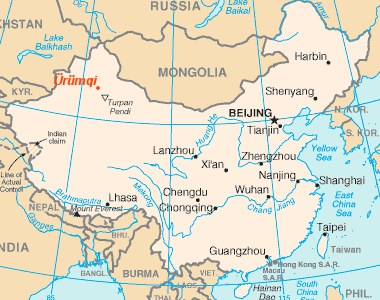
To start, this is where Ürümqi is located in China. 75% of the region is populated by the Han Chinese (what people would consider just "Chinese") 13% by the Uyghurs "wee-grrr" (The predominately Muslim ethnic group native to the area) and 8% Hui Chinese (Muslim Chinese) The area grew up as a major trading post on the northern route of Silk Road. The exchange of ideas and goods along the Silk Road spread Islam through the area. China absorbed the territory into its folds in the 50's and but not everyone was happy about that.
Wikipedia: "There continues to be concern over tensions in the region, centering upon Uyghur cultural aspirations to independence, and resentment towards what Amnesty International and Human Rights Watch describe as repression of non-Han Chinese culture."
When we were there, there was a large number of young adults roaming the streets during the weekdays. Our friend there said that its because the government provides assistance to Uyghur and other minority students that allows them to go to college. However, once they graduate, government controlled agencies and business plainly state that they do not hire Uyghurs and so quite a few graduates find themselves without work.
W: "Conversely, many Han Chinese perceive People's Republic of China policies of ethnic autonomy as discriminatory against them. Independence advocates view Chinese rule in Xinjiang, and policies like the Xinjiang Production and Construction Corps as Chinese imperialism.
"The tensions have occasionally resulted in major incidents and violent clashes during the PRC period. For example, in 1962 60,000 Uyghur and Kazak refugees fled northern Xinjiang into the Soviet Union, escaping famine and political purges of the Great Leap Forward era; in the 1980s there was a scattering of student demonstrations and riots against police action that took on an ethnic aspect; and the Baren Township riot in April, 1990, an abortive uprising, resulted in more than 50 deaths.
A police round-up of suspected separatists during Ramadan resulted in large demonstrations that turned violent in February 1997, and episode known as the Ghulja / Yining Incident and led to in at least 9 deaths [1]. The Urumqi bus bombs of February 25, 1997, perhaps a response to the crackdown that followed the Ghulja Incident, killed 9 and injured 68. Despite much talk of separatism and terrorism in Xinjiang, especially after the 9-11 attacks in the United States and the US invasion of Afghanistan, the situation in Xinjiang was quiet from the late nineties through mid-2006, though inter-ethnic tensions no doubt remained."
The Chinese government is currently promoting Urumqi as a tourist destination in an attempt to bring more Han Chinese into the area. Many of the locals greatly dislike many of the visitors from central/eastern China. When we were there the difference in mood and the mentality was quite shocking (and the sky was free of smog). The general population seemed much more laid back, especially in the markets where if you told someone you weren't interested in their products they would generally leave you alone.
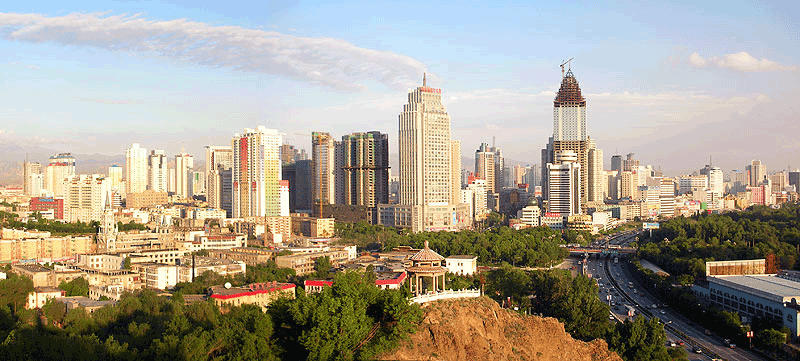
This is the picture of Ürümqi I would have liked to have taken. Instead I stole this one from Wikipedia.

Our flight had an unscheduled stop about halfway to Ürümqi. Apparently, the airline just plain forgot to tell everyone that the nonstop flight was going to stop... in Dunhuang. When we landed, we tried to ask a flight attendant if we would be getting back on this plane. The first said yes. The second said no. Once inside, a large cluster of people immediately overwhelmed the small information booth in the one room terminal. From what Alice and I could understand, the anger was not only over the fact that we would be stuck in Dunhuang for about 2 hours, but that another flight that landed 20 minutes after ours would be taking off immediately. It was also headed to Ürümqi from Xi'an. The information booth tried to keep everyone calm, however their main strategy to do this seemed to be handing everyone small bottles of water. One man, not content with his water (called "RavParty", I kid you not) actually threatened to storm the tarmac and reboard the plane. He did eventually calm down once he discovered that not everyone else was in quite the same murderous rage. In the end we made it to Ürümqi.

Hongshan - Red Mountain park

The first day there we went to the Red Mountain Park. When we arrived we had a bit of a shock as we were not charged an admission fee. This was the first park we attended in China that did not do so. However, walking on the grass was still frowned upon.

This pagoda is at the top of the park.

A chain of prayer locks.


Ürümqi



A Qing Pagoda. This was built by one of the emperors to ward off the evil dragon and his spirits!

Public art.

Ah... That explains it.

The last paragraph is sort of the Official Party line of the area. There were a number of plaques in the area that all said sort of the same thing. Mostly along the lines of "many ethnic groups working as one".

This guy was working on the side of the Pagoda.

Protect CircumStance begin with me.

This is a ride at the park. I'll be honest, if the human sized hamster ball would have worked on land too, I probably would have tried to buy it.

The sphinx

The Peacocks. We didn't have our pictures taken with them or pet them as other were incase some customs agent asked questions about bird flu or something.

There was a Buddhist temple in the park as well.

The newly remodeled Xinjiang Autonomous Region Museum. Very nicely done.

The International Grand Bazaar is rather famous and extremely large.


This camel was there everyday for pictures and rides.




Elaborately decorated knives were one of the specialties of the area.

There were quite a few fruit and nut shops.


Herbs I think.

Intricate vases.



Us trying to do laundry.

Jasur took us to dinner and showed us what the good things to eat were. We ended up going back to this place quite a few times.



There were street markets all over the place and you couldn't walk anywhere without the smell of fresh bread and kabobs. The sign on the left shows where English ranks on the list of used languages.

Some Nan we got at a bakery. One in filled with lamb and herbs. The smell of it baking permeates the streets.
Nan is Uygurs' food. Uygurs cannot miss eating a Nan any day. Nan comes in more than 10 varieties. Nan is roasted in a special oven which is made of mud and earth otherwise the process is similar to cooking pancakes. The ingredients include wheat flour, corn flour or sorghum flour, with such seasoning as sesame seeds, onions, eggs, vegetable oil, butter, milk, salt and sugar. Nan is crispy or chewy and tasty. It is easily portable and it keeps well.
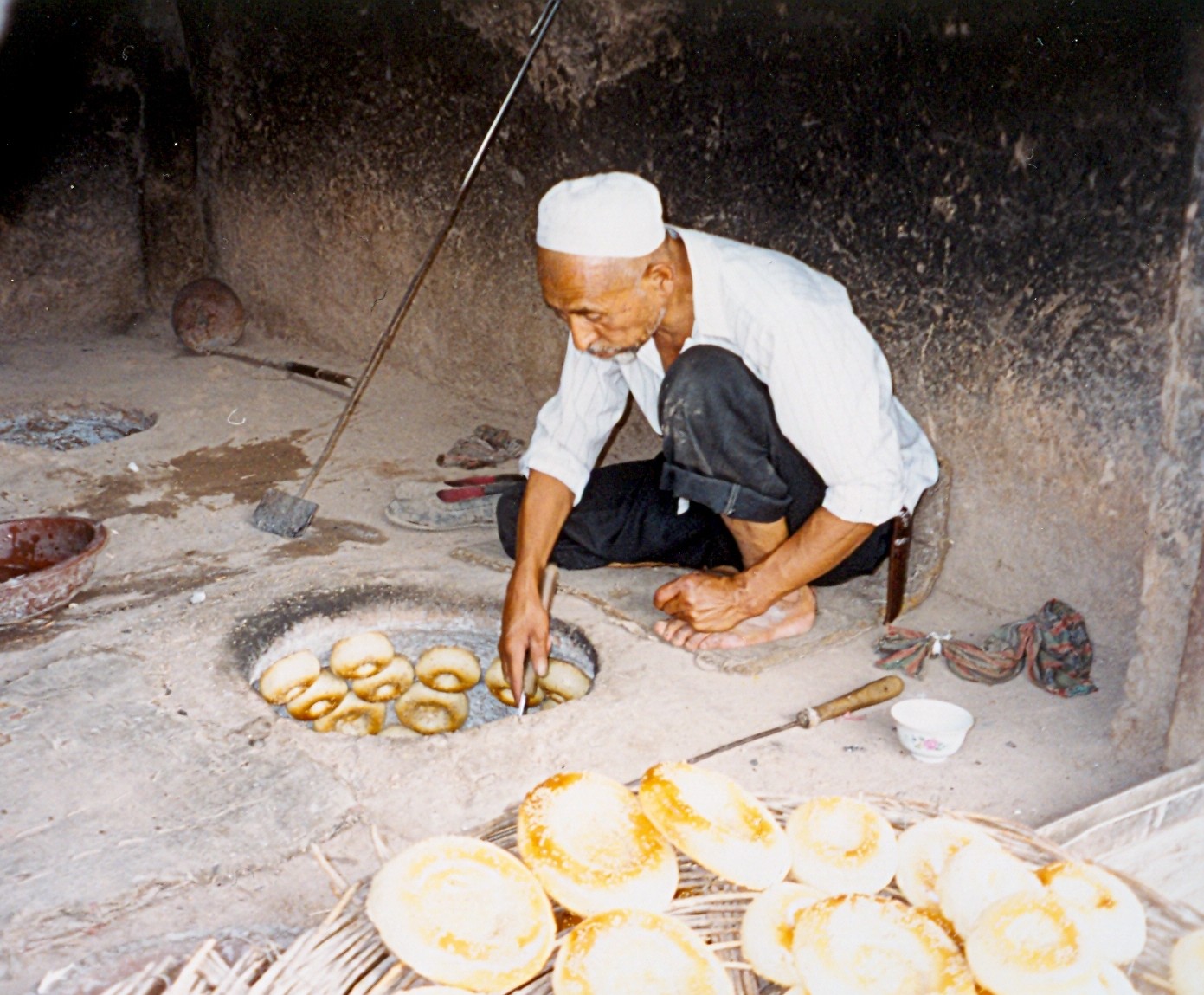
This is how nan is cooked. The most common forms we found were the flat pancake disks (that's the way I recommend it) or as the bagel shapes seen above (they were a little chewy).

This was really the only imported beer we found in the stores.

In the morning, all the restaurant owners would sit on the sidewalk and cut up the evenings meat for kabobs and other dishes. Most the cooking was done in long narrow BBQ's

This was the park in the middle of apartment complex we stayed in. It is very nice to look at which is good because it is fenced off and you are not allowed to go in it.

We had to register at the police station and were given these forms. Luckily Jasur's uncle is a detective so the process was much easier than it could have been.

Found this in one of the stores.

The rice dish is called Polo, or Pilaf or 'Uyghur Rice', depending on who you ask. It is rice cooked in mutton broth with spring onion, carrot, and a piece of mutton placed on top of the rice. The place we went added raisins and dates as well. It is very flavorful and delicious. Steamed buns and roasted buns filled with onion and mutton were also very good.

Nighttime at the Bazaar.

During the day this is an empty parking lot. At night it comes alive with booths, shops, music and food.

The butcher.

The Baker.

The hoofed whip maker.


If you look closely at the van you can see that its actually an airline ticket office. Luckily we already had our tickets.

All the hotels wanted proof that we were in the room before we got power. It would accept any card however.

All the rooms also came with this convenient power console, just incase you couldn't be bothered to get up and turn of the light yourself.

This sign was next to the elevators in our hotel. I'm have no idea what it is for.

These were actually pretty good. They came with a puzzle of the guy on the right of the box as well.

This is the local beer selection. Pretty good except for the yellow one. We didn't realize that it was pineapple flavored. It might have been ok except that it is impossible to find cold beer in the stores and you can't get ice in your hotel. The interesting thing about the Sinkiang beer is that in the Chinese, it is named after the province Xinjiang. Apparently they couldn't find anyone to check the label for spelling errors.

This is what I like to call "pee pee cola"

Ok its really "Zam Zam Cola" but it still tasted like pee pee.
Heavenly Lake - Tianshan Tianchi National Park
Sprawling on the edge of Mount Bogda and 100 km east of Urumqi, Tianchi (Heavenly) Lake and the surrounding Tianshan Mountains must define the word "beauty" in the Uygur language since there is no more beautiful place within the autonomous region. Tianchi runs 4.9 square km in area and 90 meters deep, a natural lake surrounded by snow-capped peaks and sky-soaring dragon-spruce and fed by thawing snow runoffs.
Heavenly lake is an incredibly gorgeous place that was a very welcome retreat after spending 2 weeks in Beijing and Xi'an without seeing the sky or accessible green space..

This is not the lake but a park we stopped at while trying to find tour tickets to take us and Nadir (Jasur's brother) to the lake.

We failed to get tickets and Jasur's cousin Ildar (left) insisted on driving us there.

The foot hills on the way to the Lake.

Supposedly wild camels.

All the gas stations in China are government controlled.


The Kazaks are nomadic herders who live in the hills. Nowadays, many operate their yurts as bed and breakfasts.


The first admission booth.

While we were waiting in line, some herders brought their goats down from the hills.



At the base of the mountain.

There is a trail to the lake that you can hike except we didn't have the time. We took the ropeway instead.

I found these signs at the entrance to the ropeway.


There were a number of these small temples at the top of ridiculously steep hills that it looks like no one would ever use to worship. And no one does use them. They were built for the tourists.

The parking area. The lake is not exactly a "hidden" treasure.



The lake is a very beautiful but very busy place. There is a trail that leads around the edge of the lake and if you walked around it I think the number of people would go down very quickly.



If you wanted you could rent a traditional Uyghur costume to post in front of the lake in.


Nadir

We tried to find the "Sea Stabilizing Magic Needle" but there was only a plaque marking where it used to be.




Not sure what these are for.

Back in the parking lot.

Wild horses?
The Wedding
The wedding was divided into two days. The more traditional Muslim ceremony was on Friday and consisted mostly of family members. There was a smaller ceremony and a reception along with a big party on Saturday evening. On Saturday, the groom's and bride's families have different parties. After an afternoon of drinking liquid courage, the groom goes to collect the bride from her family's party and bring her to his own family's party. The friends come along in case they need to help the groom "fight" the brides brothers or cousins if they put up resistance. We joined up with Jasur at the brides party.

Its customary to have a limo like this decked out in flowers.
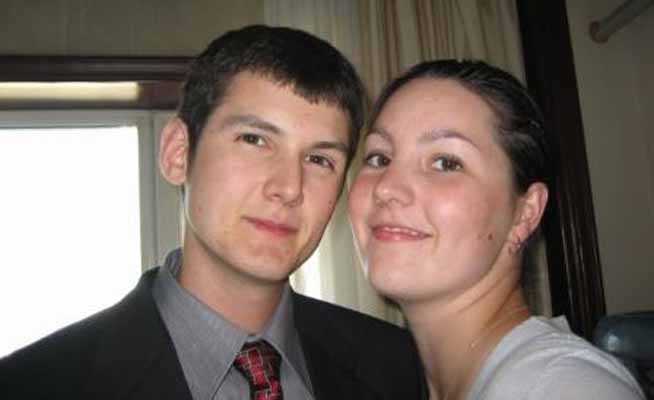
Getting ready.
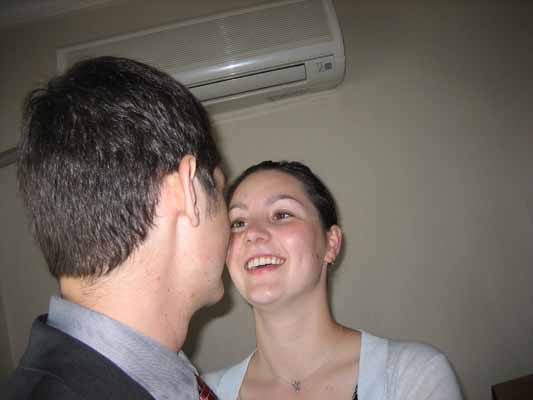
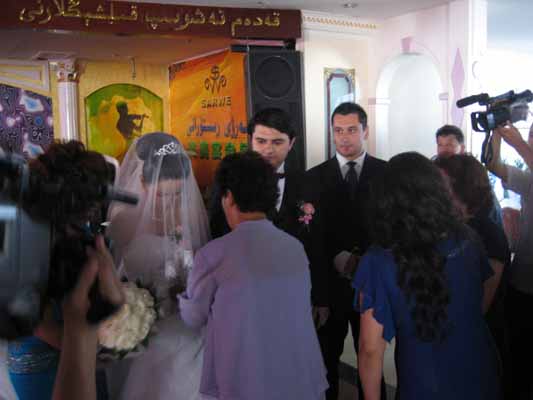
This is at the bride's families party.
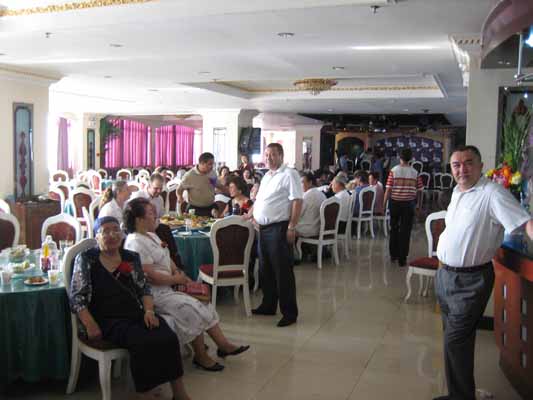
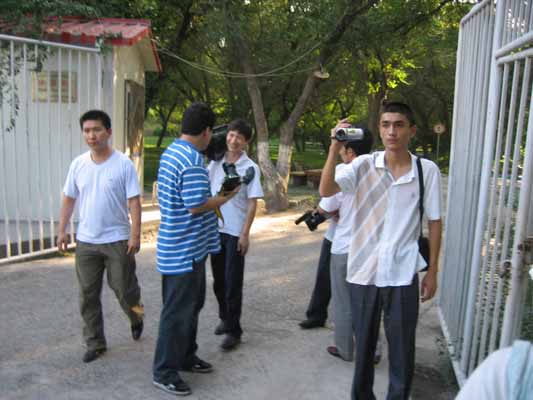
After the we left, everyone was taken to a park for copious amounts of photos.
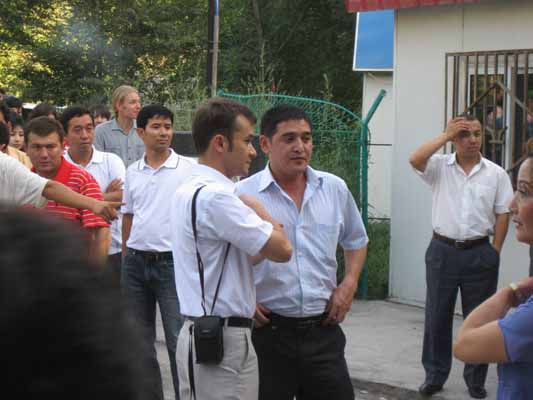
Yashar (the guy with the camera) is one of Jasur's best friends from high school.
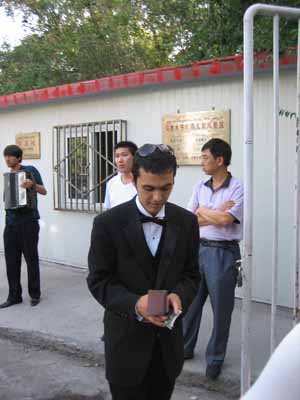
Jasur's brother Nadir.
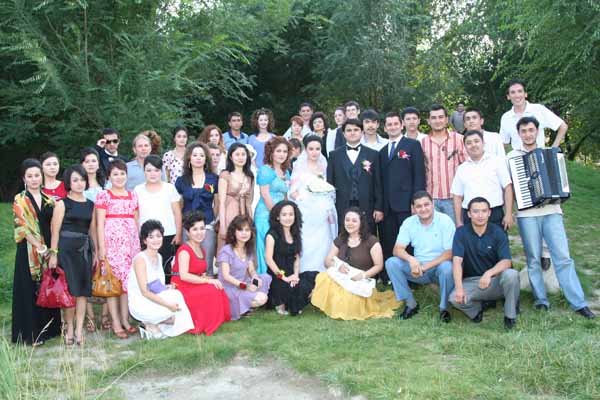
Group photo. Can you spot the foreigners?
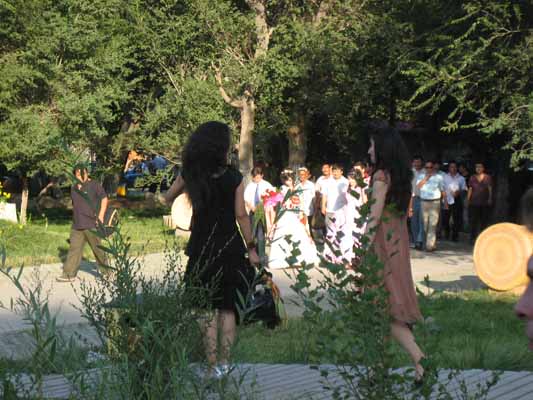
This is a very popular wedding picture park. This is another wedding party.
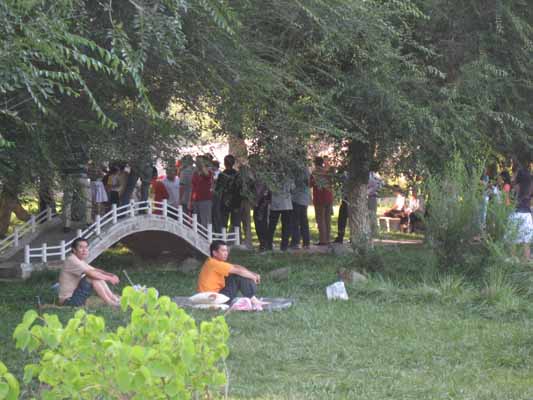
And another one.
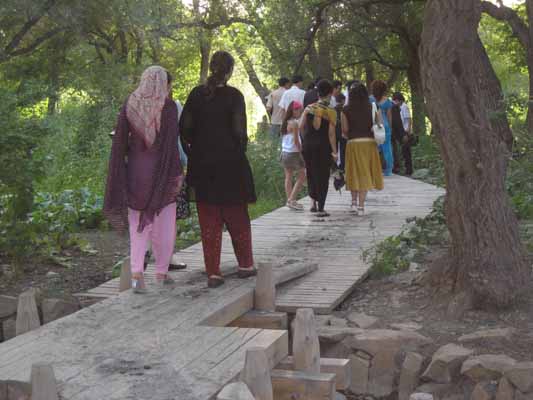
After the group photo, most of the people left and only a few followed to watch the bride and groom get photos together. We weren't quite sure what to do so we followed along.
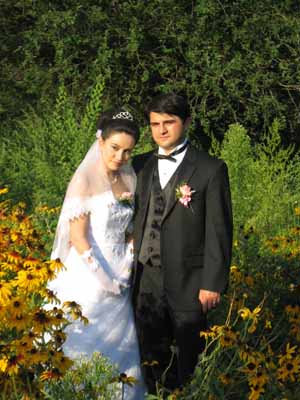
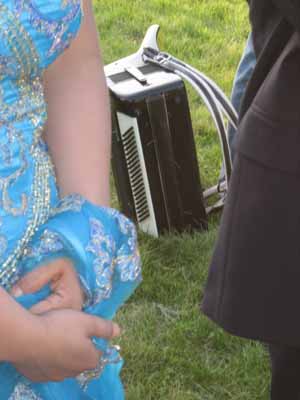
We were accompanied by our own accordionist.
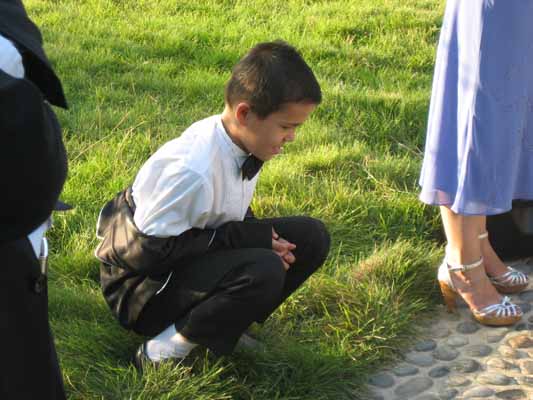
One of Jasur's cousins. He was half of the team who carried the brides train.
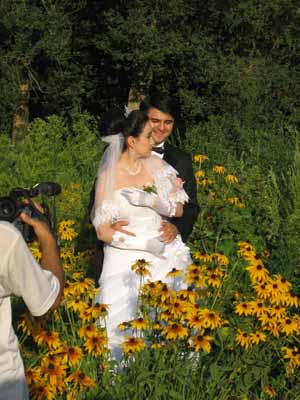
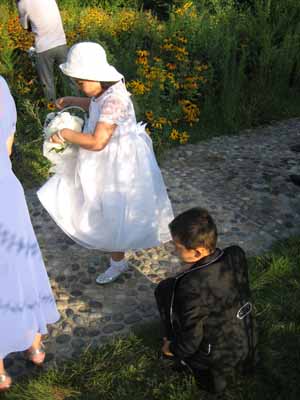
The other half.
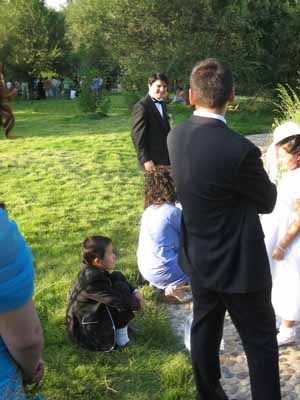
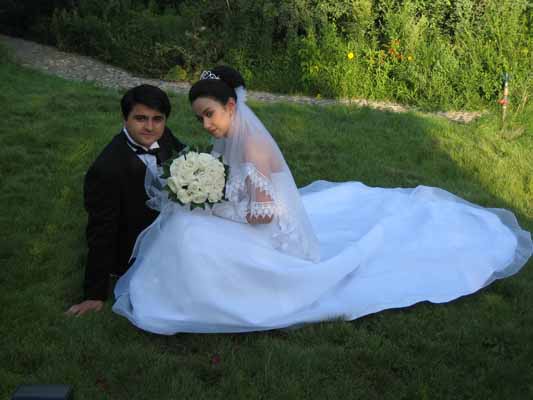
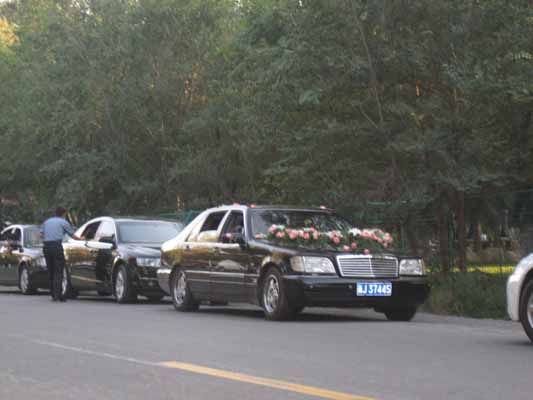
We drove from place to place in a procession of six or seven black Audis.
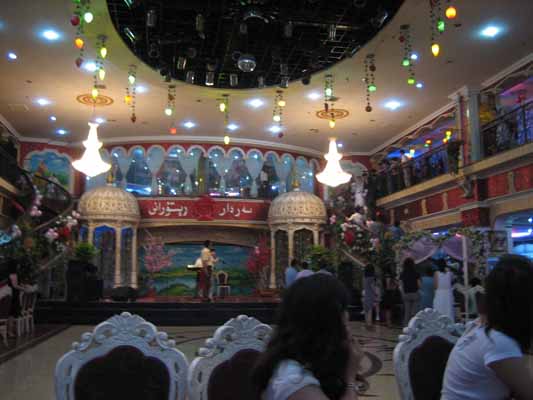
The groom's party. The bride and groom entered from the balcony on the right and are coming down the staircase.
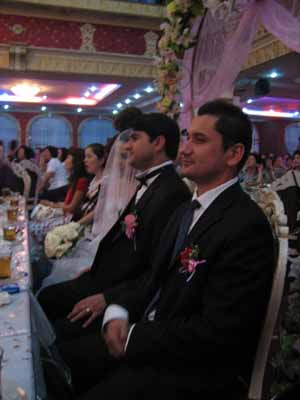
Jasur's best man. I think the requirement was the oldest married cousin.
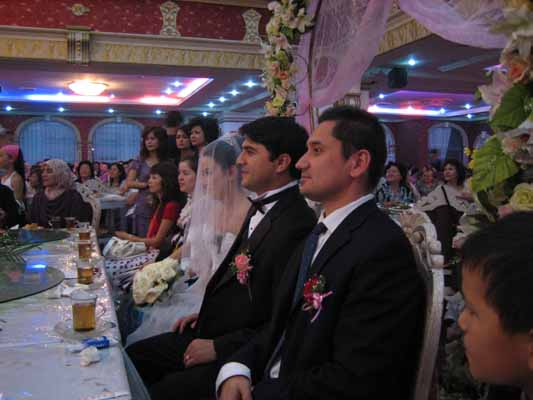
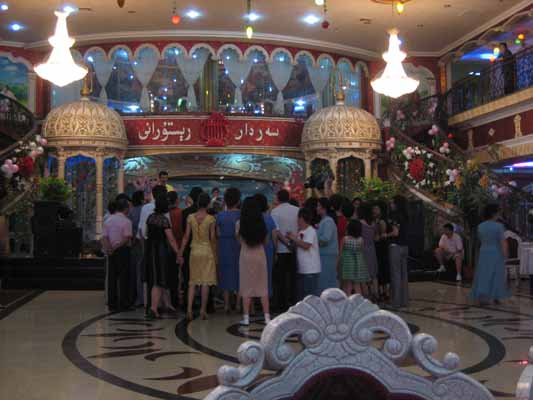
There was another ceremony. I think there was an exchange of rings.
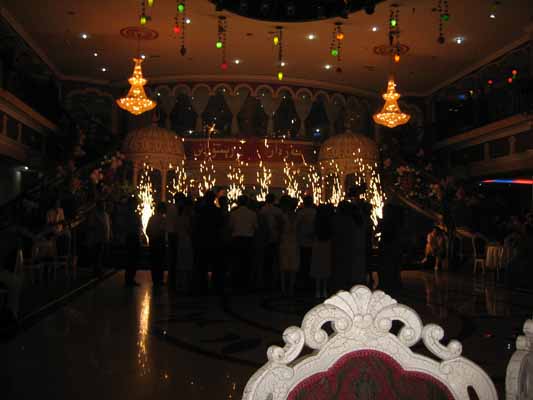
And fire works!
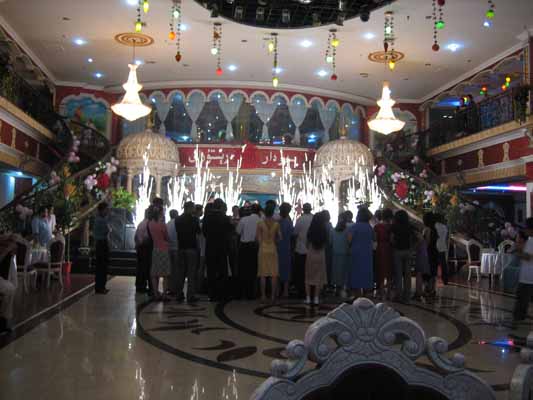
Fireworks again!
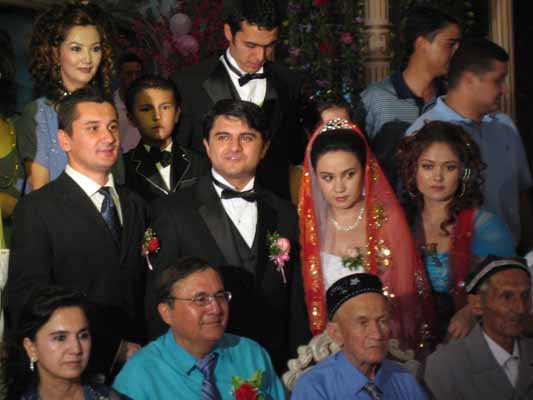
And group photos.
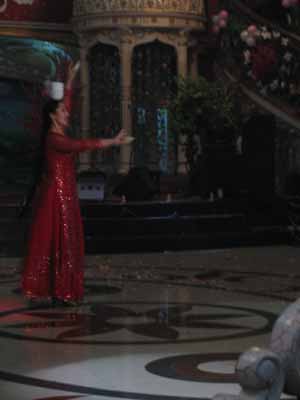
There was a large array of entertainment from something that seemed almost like a Charlie Chapman impersonator to a very traditional Tartar dance performed by the best man and maid of honor.
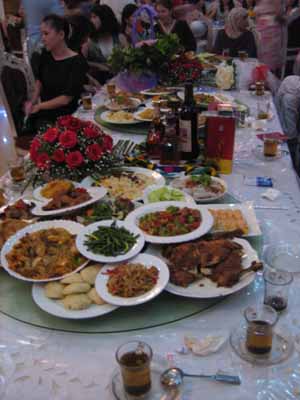
And then there was food. So much in fact that there wasn't enough room for it all.
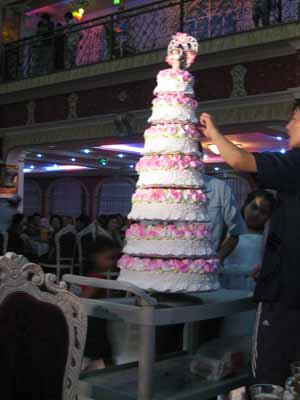
Cake.
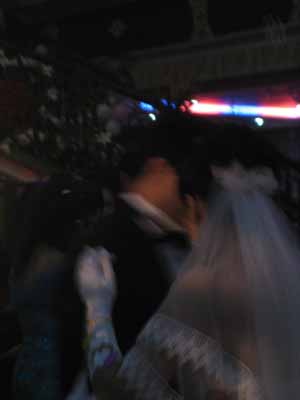
Dancing.
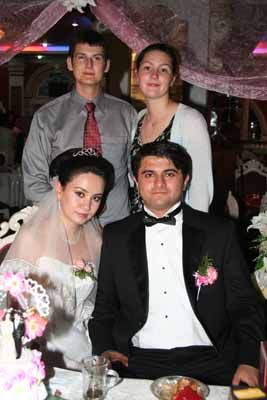
Poor Jasur and Elnur spent the whole time taking photos. I think they took this one with us at about 11 at night.
Back to Beijing

Scenery on the way to the airport.


Ürümqi and Xinjiang Provence are famous for their fruit (a huge watermelon goes for about 3 RMB or 40 cents) and so travelers tend to bring fruit back as gifts. There is a weight limit for the baggage you bring on the plane (20 kilos checked baggage) but apparently no limit to the number of bags. Currently there is only fruit on the baggage conveyor belt.


Pizza hut delivery service.

7-11, similar on the outside, very different on the inside.

I looked at prices for apartments in Beijing, the one on the left goes for 180 RMB a month. That's about 25 dollars.


We found this guy and his donkey cart outside our hotel near the Beijing airport.
Well, hope you've enjoyed. We have about 1000 more pictures if anyone wants to see them but under the Geneva Conventions I am only allowed to post this many online so you'll have to come bug us about them some other time. Please let me know if any of my comments are illegible, contain 2nd grade grammar or spelling skills or are such obvious plagiarisms that you are thinking about suing me and I can change them. If you are interested in more then follow the links to go....
Back to Xi'an
No, go to Beijing
Are you kidding?! I'm so sick of this I want to see something completely different.